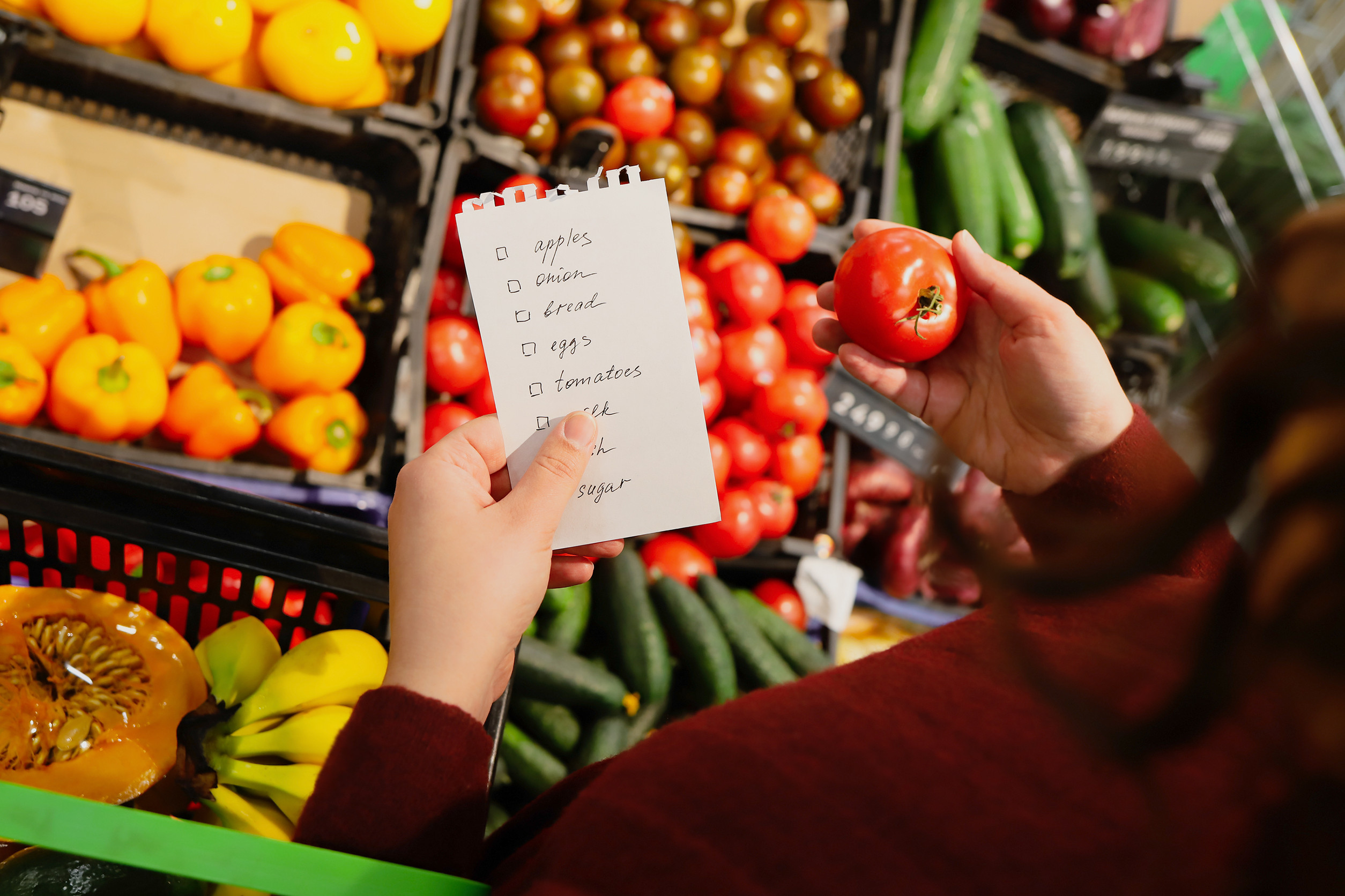Every grocery list is a peek into someone’s lifestyle, preferences, and even their bank account. Whether you’re grabbing organic produce, frozen meals, or store-brand pasta, your shopping habits reveal more about your financial reality than you might think. In fact, experts say you can often tell someone’s priorities, budgeting skills, and stress levels just by what’s in their cart. When you take a closer look at your grocery list, you may be surprised at what it says about your relationship with money. Here’s how your grocery list and finances are more connected than you realized.
1. Lots of Convenience Foods May Signal Financial Stress
If your list is loaded with frozen meals, pre-chopped veggies, and ready-made snacks, you’re not alone—but it might suggest you’re stretched thin. People with packed schedules and tight budgets often trade time for convenience, even if it means paying more per item. It can also indicate burnout or a lack of mental bandwidth to plan and prep full meals. While it’s not necessarily a sign of poor money management, it often reflects short-term thinking over long-term savings. Convenience comes at a cost—one that can quietly eat away at your food budget over time.
2. Brand Loyalty Might Be Costing You

Image Source: 123rf.com
Do you automatically write down name-brand cereal, soda, or cleaning products without checking for cheaper alternatives? That kind of brand loyalty often points to emotional spending or old habits that haven’t been reevaluated. Shoppers who consistently skip store brands may be spending 20–30% more than necessary. It’s not about giving up quality—it’s about knowing when you’re paying for packaging rather than performance. If your grocery list includes a lot of familiar labels, it might be time to reassess what’s truly worth the extra cost.
3. Bulk Buying Shows Long-Term Thinking
If your grocery list includes items like family-size rice bags, value packs of meat, or pantry staples in bulk, chances are you’re planning ahead. Bulk shoppers tend to have stronger budgeting skills, better storage systems, and a bigger-picture approach to money. These purchases often cost more up front but pay off in long-term savings. Bulk buying also indicates that you track your household’s needs and shop with intention, not impulse. It’s one of the clearest signs that your grocery list and finances are working in harmony.
4. A Sparse List Might Mean You’re Living Paycheck to Paycheck
A short grocery list isn’t always a sign of minimalism—it could be a red flag. Many people living paycheck to paycheck buy only what they can afford for the next few days. This leads to more frequent shopping trips, higher costs per meal, and more stress overall. It may also mean skipping important but non-urgent items like spices, supplements, or healthy snacks. If your lists are always tiny and your fridge always feels half-empty, it could be a sign your budget needs attention.
5. No Meal Ingredients? You Might Be Overspending on Takeout
If your grocery list is full of snacks, drinks, and sweets—but missing the basics for an actual meal—it’s likely that takeout is filling the gap. This can be a sneaky financial drain, especially when eating out becomes the default rather than the exception. People who don’t plan for meals often end up spending more impulsively throughout the week. Without a few foundational ingredients on your list—like pasta, chicken, or veggies—your grocery spending may not match your eating habits. It’s a disconnect that adds up fast.
6. Organic Everything Might Reflect Values—but Also Budget Stretching
If your list is filled with all-organic products, it may reflect a strong commitment to health and sustainability—but also a willingness to stretch your budget for your values. Organic groceries can cost up to 50% more than their conventional counterparts, depending on the item. Shoppers who prioritize organic may be making trade-offs in other areas to afford it. While there’s nothing wrong with investing in your well-being, it’s important to know whether it fits your overall financial picture. Your grocery list and finances should align in a way that’s sustainable for your body and your wallet.
7. Frequent Splurge Items Could Be a Red Flag
Is your grocery list always including premium ice cream, expensive cheeses, or fancy drinks? A treat here or there is totally fine—but a pattern of indulgent extras might hint at emotional spending. Food often becomes a comfort tool when money is tight or life feels overwhelming. These small indulgences can fly under the radar but add up to big spending over time. Taking note of these habits can help you refocus on needs versus wants in your weekly grocery routine.
Every List Is a Money Map—You Just Have to Read It
The next time you write or check off your grocery list, take a closer look at what it says about your finances. Are you being intentional, reactive, or somewhere in between? Are your habits helping you save—or quietly costing you more than you realize? By making small changes to how you shop, you can bring your food spending in line with your financial goals. Your grocery list isn’t just a to-do—it’s a tool. Use it wisely.
What’s one change you’ve made to your grocery list that helped your budget? Share your tips or habits in the comments—we’re all learning from each other.
Read More


